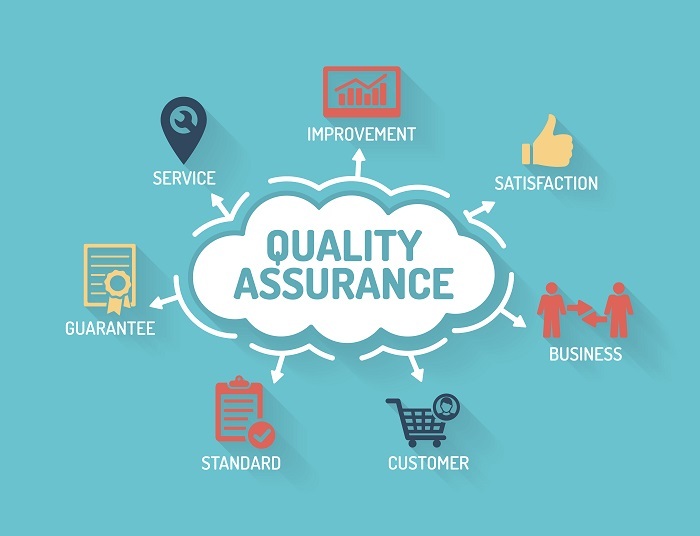
 Data Structure
Data Structure Networking
Networking RDBMS
RDBMS Operating System
Operating System Java
Java MS Excel
MS Excel iOS
iOS HTML
HTML CSS
CSS Android
Android Python
Python C Programming
C Programming C++
C++ C#
C# MongoDB
MongoDB MySQL
MySQL Javascript
Javascript PHP
PHP
- Selected Reading
- UPSC IAS Exams Notes
- Developer's Best Practices
- Questions and Answers
- Effective Resume Writing
- HR Interview Questions
- Computer Glossary
- Who is Who
Best Practices for Quality Assurance in Service Industries
Quality assurance should be the primary emphasis of every team inside any business. Ensuring a project is done well the first time saves money, time, and frustration, regardless of whether a person's labor mainly affects their fellow team members or a company's customers.
Without thorough testing, a new tech product or service might irreparably destroy client confidence and the company's brand. Your consumers will see the impact it makes on all of your processes. This blog article will examine planning methods, implementing quality assurance, and keeping it up in the service sectors over time. So hold on and get ready to learn how to provide your clients with exceptional service!

What is Quality Assurance?
Quality assurance (QA) is a procedure that assures the product or service's quality. The key components of quality assurance in the service sector are developing standards, practices, and processes that assist service providers in maintaining excellence and consistency in their offerings.
To improve the total quality of services, quality assurance measures and evaluates the output of workers and service providers, collects consumer feedback, and puts continuous improvement plans into practice. By ensuring that clients get the best possible service, quality assurance helps organizations establish solid reputations, win over more committed customers, and spur development.
What is the Purpose of Quality Assurance in Service Industries?
In the service sector, quality assurance guarantees that clients obtain dependable, high-quality services that meet or exceed their expectations. By defining standards, practices, and processes that control service delivery, quality assurance assists service providers in maintaining the appropriate level of quality in their offerings.
Using quality assurance procedures guarantees that services are provided effectively, efficiently, and consistently, which promotes client loyalty, trust, and a good reputation. It provides great client experiences that exceed expectations while fostering long-term corporate success.
Setting Up Quality Assurance
Getting ready for quality assurance is one of the most important steps in guaranteeing the process's success. Best practices for getting ready for quality assurance in service sectors include the ones listed below ?
Importance of creating expectations and standards
Service providers should identify the key performance indicators (KPIs) that will be used to gauge the quality of their services, such as response times, customer satisfaction levels, and first-call resolution rates. Thus, it provides a framework for evaluating service quality by clearly defining expectations and standards, guaranteeing that all stakeholders are on the same page.
Doing a complete analysis of the service sector
To pinpoint best practices and possible areas for development, service providers should thoroughly analyze the service sector. An examination of market trends, client feedback, and rival performance should all be part of this evaluation. Service providers may find possibilities to separate from the competition and enhance their offerings by being thoroughly aware of the market environment.
Creating a quality assurance strategy
Service providers should create a quality assurance plan outlining their goals, objectives, and methods for providing high-quality services. A thorough explanation of the quality assurance process, including the roles and duties of the various stakeholders, the KPIs used to gauge the level of service, and the instruments and technologies used to track performance should be included in the plan.
Sustaining Quality Assurance
Monitoring and enhancing service quality continually is necessary to maintain quality assurance. The following are some top techniques for preserving quality control in the service sector ?
Applying continuous improvement strategies
Service providers should practice continuous improvement strategies that include identifying areas that need improvement and creating plans of action to address such areas. Process improvements, personnel development, and the introduction of new technology may all fall under this category.
Reviewing and updating standards and procedures often
To make sure that standards and procedures are current and effective, service providers should review and update them frequently. This can include considering suggestions from clients and staff, upgrading tools and technology, and adjusting for changes in the competitive environment.
Supporting a culture of quality
Service providers can support a quality culture among staff members by highlighting the significance of quality assurance and honoring staff members who offer great customer service. This may contribute to the development of an accountable and progressive culture.
Using technology and data analysis
Service providers should use technology and data analysis to monitor service quality and pinpoint areas for improvement. This may include using analytics tools, social media monitoring software, and customer relationship management (CRM) software.
Best Practises for Quality Assurance
1. Define clear processes
Quality assurance aims to provide "in-process verification points" to guarantee the intended product quality. A tech leader should concentrate on establishing precise goals, creating robust and succinct control points/checklists, directing the team to follow the route laid out, conducting regular reviews, and keeping a pulse on the client at all times.
2. Do regular product testing
It's crucial to test your items in various scenarios so that you can see any potential problems as soon as possible. You may prevent future litigation and unfavorable consumer responses by doing this.
3. Install quality checkpoints for each project phase
Establishing quality gates is crucial in corporate technology, particularly throughout the discovery, preparation, exploration, realization, deployment, and run phases. The quality gate should be stricter in the initial stages since this will reduce expenses later. Quality and user experience are also crucial. The secret to success has a superior product that can relate to the customer.
4. Convey testing results
All teams engaged in the software development process should be informed of the testing results so they may make defensible judgments.
5. Use automation
Tech leaders should recognize the need for automation in their testing process and apply automation strategies to significantly reduce QA time since QA is increasingly focusing on automated testing. The efficiency of QA teams may be significantly increased and faults can be decreased by identifying competent resources, tools, and skills and using automation efficiently.
Conclusion
Each service sector depends on providing top-notch service. Yet maintaining brilliance over time is no simple task. It necessitates implementing the finest quality assurance procedures, which may be the difference between forgettable and outstanding client experiences. By implementing these procedures, service businesses may create a culture of quality and accountability, and constantly improve their products and procedures.
These actions provide the basis for developing a business committed to providing unmatched service and encouraging client loyalty. Hence, if you work in the service sector, it's time to step up your game and adopt these best practices for quality control. Your clients and bottom line will both appreciate it!

